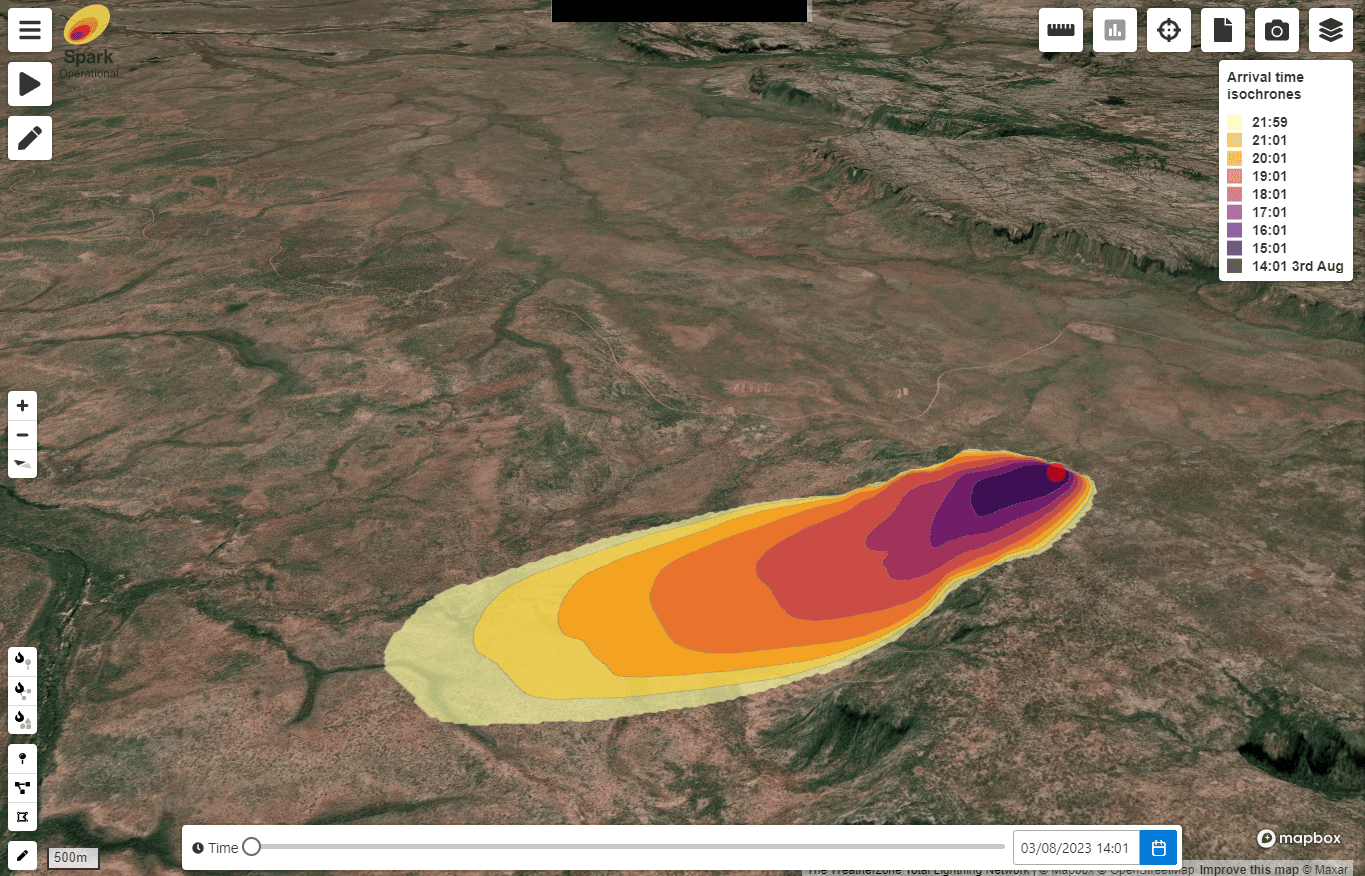Fire prediction simulators
Bushfire simulation has become an important function in most fire agencies and contributes to many critical fire agency functions. As a result, bushfire simulators have become deeply integrated into the work of these agencies.
Predicting the spread of fire is a complex and rapidly evolving enterprise bringing together weather, fire behaviour, fuel and land surface models. Although simulators have existed for several decades, model accuracy, IT system capacity and input data good enough to make models reliable in an operational context have only recently become available. Indeed, many industry experts do not yet consider current models sufficiently reliable for critical operations without thorough manual validation.

Spark Operational
Spark Operational is Australia's newest fire behaviour simulator built by AFAC and CSIRO Data 61. The simulator is build with modular and flexible coding and can be used with the advanced GUI or through an API.
The need for a next-generation national bushfire simulation capability – designed to make use of the latest science and technology – that is scalable and flexible, supports all land and fire management agencies and can cover most vegetation types in Australia, was well recognised by the industry.
As a result, a national bushfire simulation capability was developed by Fire Predictions in partnership with CSIRO, in close coordination with AFAC members (via AFAC) and with the assistance of the Minderoo Foundation, Spark Operational has emerged from this collaboration.
Spark is a next-generation bushfire simulation capability to support fire management decision making and improve community safety. Spark Operational is an operational version of Spark, which is a software architecture developed by CSIRO. Spark Operational is a national capability designed to make use of the latest science and technology. It allows fire behaviour analysts, planners and others to predict the movement of fire across the landscape to support several critical functions within fire and land management agencies.
Because Spark is built as a framework, the various components can be separately improved or customised, so that the system is scalable, tailorable and updatable. Importantly, it is designed to incorporate existing fire behaviour models and new models as they become available.
Users can easily import their own high resolution fuel maps, backgrounds, gridded and spot (time series) weather streams, and quickly update fuel attributes. The user interface (UI) also allows users to quickly mask out or modify fuel types, interactively input ignition locations, and fire disruptions. Spark Operational supports fast ensemble runs to quantify uncertainty in weather forecasts or explore 'what-if' scenarios, including the impact of various fire breaks, fuel treatments and ignition patterns.
Licences are currently available to AFAC member agencies as they test and trial the system.
Commercial and academic licences will be come available in due course. Contact firepredictions@afac.com.au for more information.
Phoenix Rapidfire
Phoenix Rapidfire was originally built by the University of Melbourne and what is now the Victorian Government Department of Environment, Energy and Climate Action. Further developments were made possible with input from AFAC and NSW Rural Fire Service.
Phoenix Rapdifire is available under a commercial licence.
Click here for access to the Phoenix Rapidfire knowledge base.
Are you interested in a licence for Phoenix Rapidifire? Contact us at firepredictions@afac.com.au.